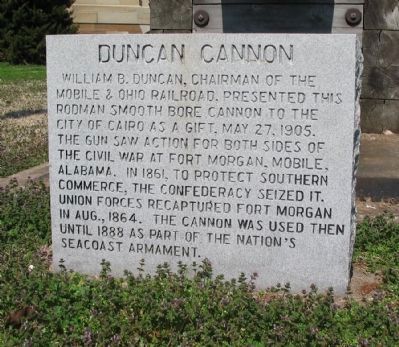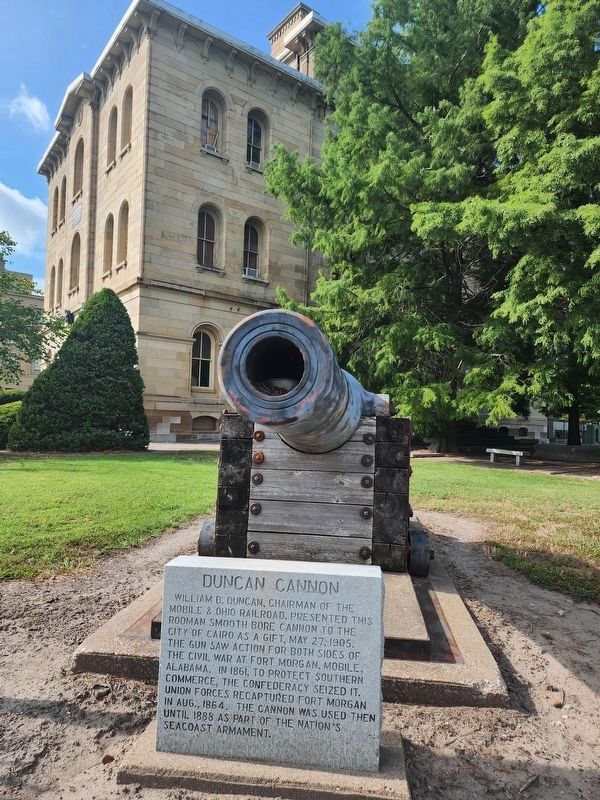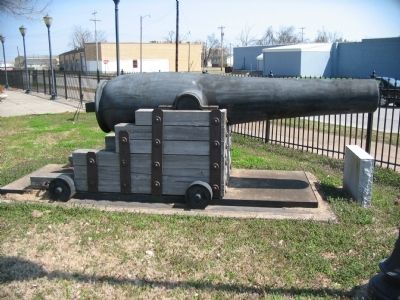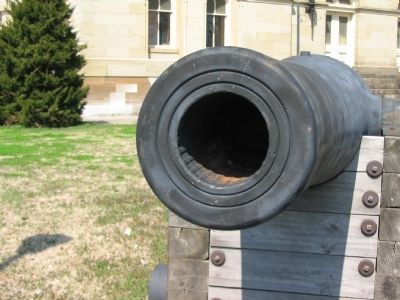Cairo in Alexander County, Illinois — The American Midwest (Great Lakes)
Duncan Cannon
Topics. This historical marker is listed in this topic list: War, US Civil. A significant historical month for this entry is May 1864.
Location. 37° 0.157′ N, 89° 10.307′ W. Marker is in Cairo, Illinois, in Alexander County. Marker is at the intersection of Washington Avenue (U.S. 51) and 14th Street, on the right when traveling north on Washington Avenue. Located on the grounds of the Old US Customs House and Post Office. Touch for map. Marker is in this post office area: Cairo IL 62914, United States of America. Touch for directions.
Other nearby markers. At least 8 other markers are within walking distance of this marker. The Cairo Custom House (within shouting distance of this marker); Seaman (within shouting distance of this marker); York the Slave (within shouting distance of this marker); Mary J. Safford (about 600 feet away, measured in a direct line); The Cairo Public Library (about 600 feet away); President Clinton Visits Cairo, Illinois (about 600 feet away); The Historic First Presbyterian Church (approx. 0.2 miles away); St. Patrick Catholic Church (approx. ¼ mile away). Touch for a list and map of all markers in Cairo.
Additional commentary.
1. The Gun's History
There are several points to make in conflict with the text of this marker. To start, the gun is not a smoothbore, but rather a rifled gun. It started life as a smoothbore, however. Cross matching the muzzle markings with secondary sources, this gun was originally cast as a 10-inch Rodman smoothbore gun. The gun was made by Fort Pitt Foundry, Pittsburgh, Pennsylvania in 1862, inspected by Jasper Myers. It weighed 14,905 pounds at that time. The gun's original registry number was 45.
The current muzzle markings read (from the 12 o'clock position, clockwise): "No. 34 - 15915 lbs - D.A.L. - B.I.W. - 1884." Translated this means the gun is registry number 34 weighing 15,915 when inspected by David Alexander Lyle, at Boston Iron Works (South Boston, Massachusetts), in 1884. The gun is one of approximately 30 which were modified from smoothbore to rifle by inserting steel sleeves through a hole cut in the breech. Thus modified the gun became an 8-inch Rifled Rodman Seacoast gun.
Based on this administrative record, by way of the gun's markings, clearly the gun was NOT at Fort Morgan in 1861. Likely it did not see Confederate service. And logically then it was not recaptured by Federal forces in 1864. Clearly the gun was at Boston, Massachusetts in 1884 for the modification described above. But given the limited funding for military projects at that time, it is unlikely the Army would have retired the piece four years later. Several guns of this type served the nation's defenses until the Spanish-American War.
— Submitted May 28, 2009, by Craig Swain of Leesburg, Virginia.
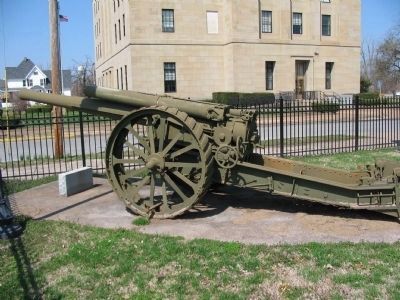
Photographed By Craig Swain, March 17, 2009
6. 5-inch or 60 Pounder Breechloading Rifle
This gun, made by Armstrong-Whitworth & Co. in England, was sold to the American Army for service in France during World War I. It now serves as the American Veterans of Foreign Wars monument at the Customs House. The placement allows for easy comparison to the Duncan Cannon, showing the progressive developments in artillery technology after the Civil War.
Credits. This page was last revised on October 2, 2023. It was originally submitted on May 28, 2009, by Craig Swain of Leesburg, Virginia. This page has been viewed 2,239 times since then and 38 times this year. Photos: 1. submitted on May 28, 2009, by Craig Swain of Leesburg, Virginia. 2. submitted on September 21, 2023, by James P Zaworski of Joliet, Illinois. 3, 4, 5. submitted on May 28, 2009, by Craig Swain of Leesburg, Virginia. 6. submitted on May 31, 2009, by Craig Swain of Leesburg, Virginia.
